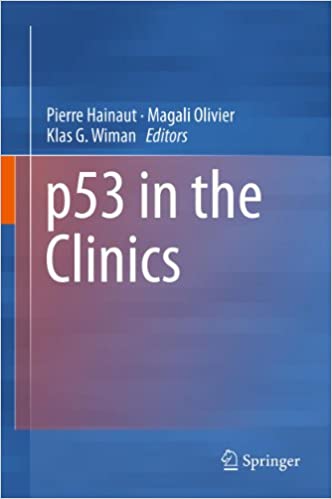
|
Edited by |
Table of contents
Chapter 2: The inheritance of p53; Lukasz F. Grochola, Jorge Zeron-Medina, Emmanouela Repapi, Alexander E. Finlayson, Ying Cai, Gurinder Singh Atwal, and Gareth L. Bond
Chapter 3: p53: guardian of the metabolome; Masha V. Poyurovsky and Carol Prives
Chapter 4: The p53 family and stem cell biology; Massimiliano Agostini, Alessandro Rufini, Edward T.W. Bampton, Francesca Bernassola, Gerry Melino, and Richard A. Knight
Chapter 5: Mutant p53-driven tumorigenesis; Tamara Terzian and Guillermina Lozano
Chapter 6: Humanised Mouse Models: Targeting the Murine p53 Locus with Human Sequences; Monica Hollstein and Yang Xu
Chapter 7: p53 models for mammary carcinogenesis; Wolfgang Deppert and Genrich Tolstonog
Chapter 8: TP53 Somatic Variants: Prognostic and Predictive Value in Human Cancers ; Magali Olivier
Chapter 9: Assessing TP53 status in human tumors: lessons from breast cancer; Anita Langerod, Magali Olivier, and Anne-Lise Borresen
Chapter 10: TP53 germline mutations: genetics of Li-Fraumeni Syndrome; Doua Bakry and David Malkin
Chapter 11: Tp53 Gene Therapy for Cancer Treatment and Prevention ; Robert E. Sobol, Yong-Song Guan, Long-Jiang Li, Wei-Wei Zhang, Zhaohui Peng, Kerstin B. Menander, Sunil Chada, Daniel C. Maneval, Jane A. Horowitz, Robert Warren, Gary L. Clayman, Stephen G. Swisher, W. Jarrod Goodman, John Nemunaitis, and Jack A. Roth
Chapter 12: Upstream targets in the p53 pathway; Anna R. McCarthy and Sonia Lain
Chapter 13: p53-Reactivating Molecules as Research Tools and Anticancer Drugs; Vera V. Grinkevich, Andreas Warnecke, and Galina Selivanova
Chapter 14: Targeting Mutant p53 for Improved Cancer Therapy ; Jinfeng Shen, Vladimir J.N. Bykov, and Klas G. Wiman
Chapter 15: p53-immunotherapy of cancer; Hakim Echchannaoui and Matthias Theobald
Chapter 16: Designing p53 trials: a surgical oncologists view; Daniela Kandioler, Sonja Kappel, and Brigitte Wolf
Chapter 17: p53 in the clinic: a pathologists view; Philippe Bertheau, Jean-François Fléjou, Yves Allory, Pascale Varlet, Sylvie Lantuejoul, Louis-François Plassa, Hugues de Thé, Anne Janin, and Jacqueline Lehmann-Che
Chapter 18: Genetic Counseling for TP53 germline mutations; Maria Isabel Waddington Achatz and Patricia Ashton-Prolla